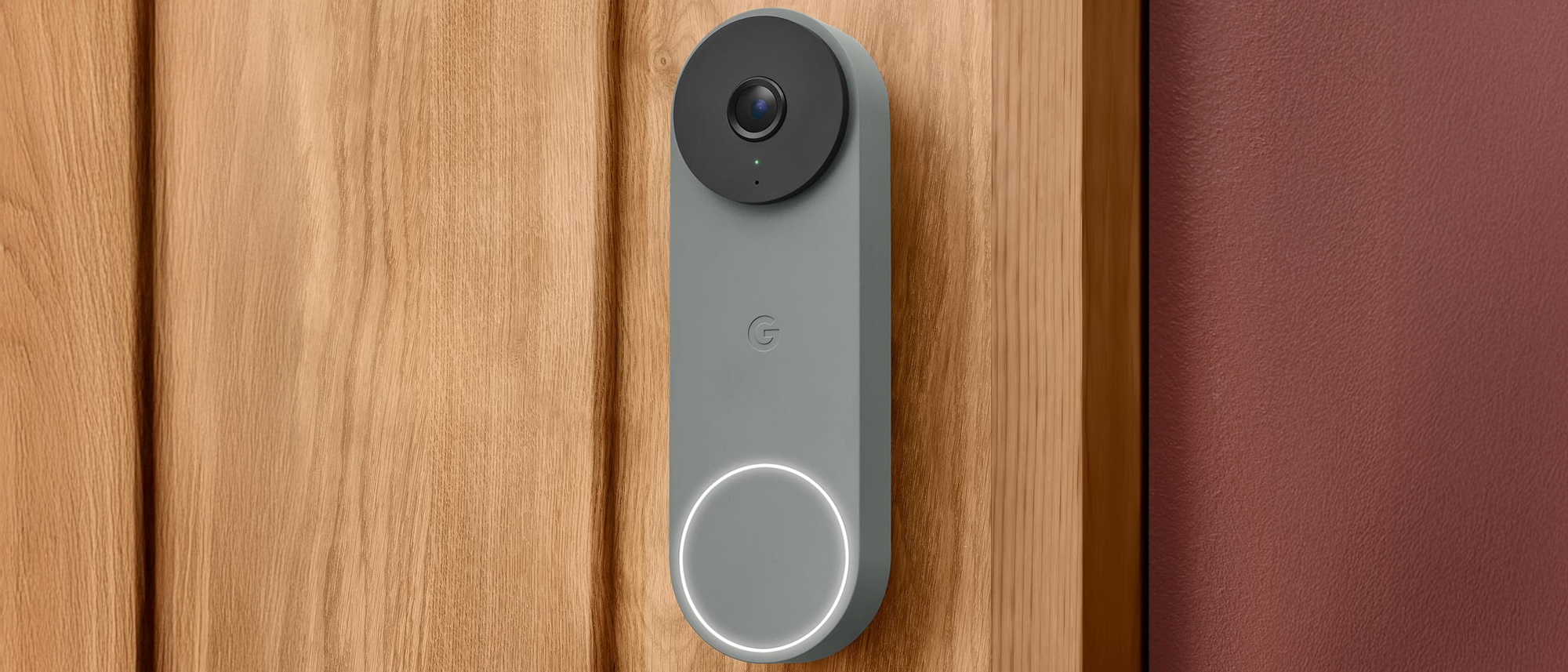Best OLED TVs in 2025 tested: Our top picks from LG, Samsung and more
We've tested the best OLED TVs for every budget and lifestyle
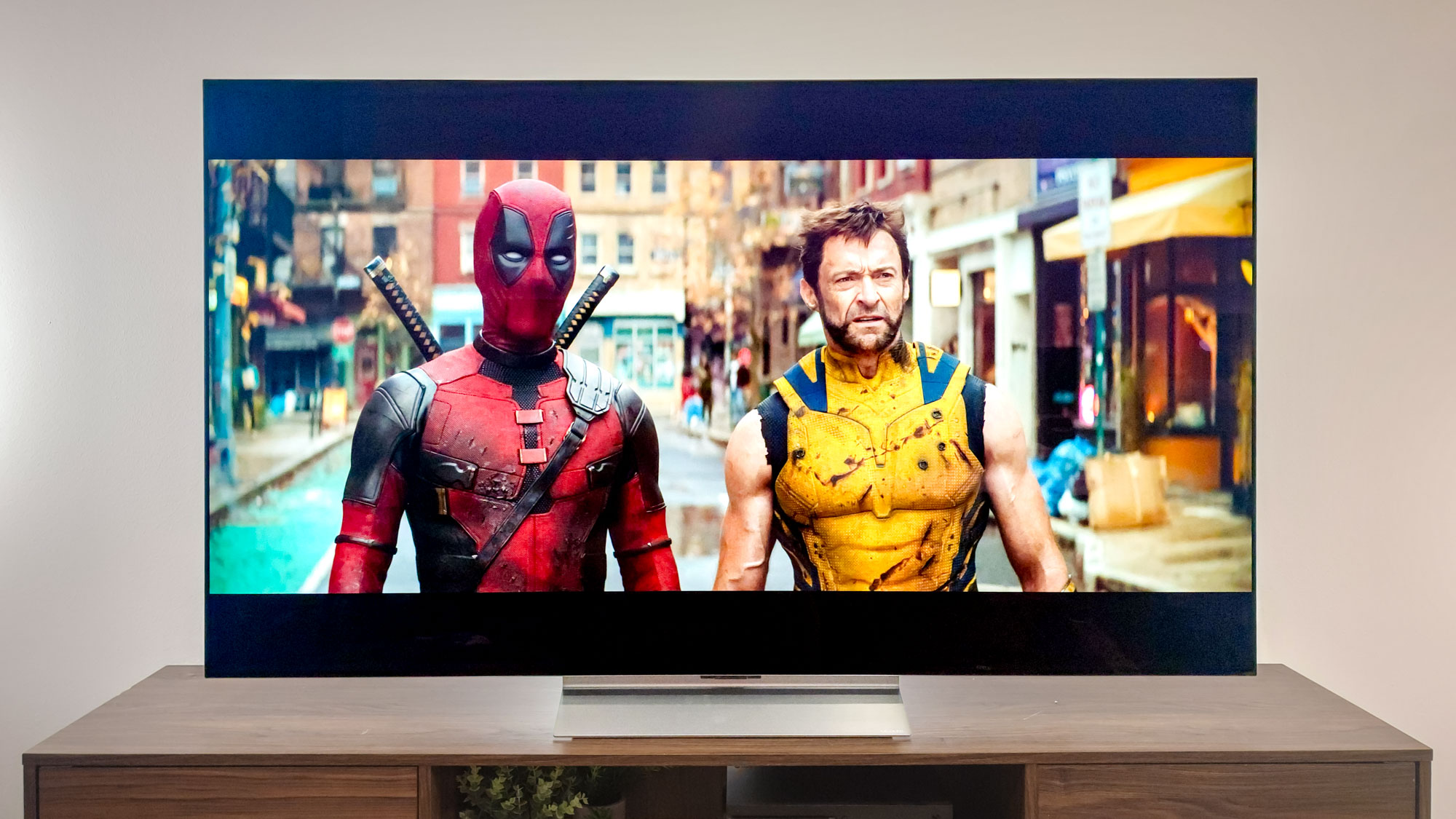
I've been testing the best OLED TVs since they launched in 2012. They're my go-to choice for home cinema setups as they offer perfect black levels with pixel-perfect light control and better vibrancy than QLED TVs.
If you're after the top choice that offers the best OLED TV around right now at a good price, then you'll want to check out the LG C5. In many ways, this is the perfect TV; fantastic brightness, easy to use software and great gaming performance.
But for those wanting to spend a little less, last year's LG B4 is one of our favorite options right now. The B5 came out earlier this year, but we still feel the B4 is the model to get, especially at its new lower price.
About the author

My name's Nick and I look after our guides to all of the greatest TVs. OLEDs are one of the biggest revolutions in display technology of the past 20 years. They offer perfect black levels and wide color gamuts, while seeing incremental upticks in brightness every year. Lots of research goes into making an OLED TV look the way it does, and the same amount of care, time and research has gone into assembling this list. Why trust me? I've seen almost every OLED TV made in the last 10 years. Before I joined Tom's Guide at Managing Editor I was formerly the Senior Editor, TV and AV at TechRadar. If you've read a story about the breakthroughs of OLED TV sometime in the last decade, it probably has my name on it.
The best OLED TVs you can buy right now
Why you can trust Tom's Guide
Best OLED TV overall
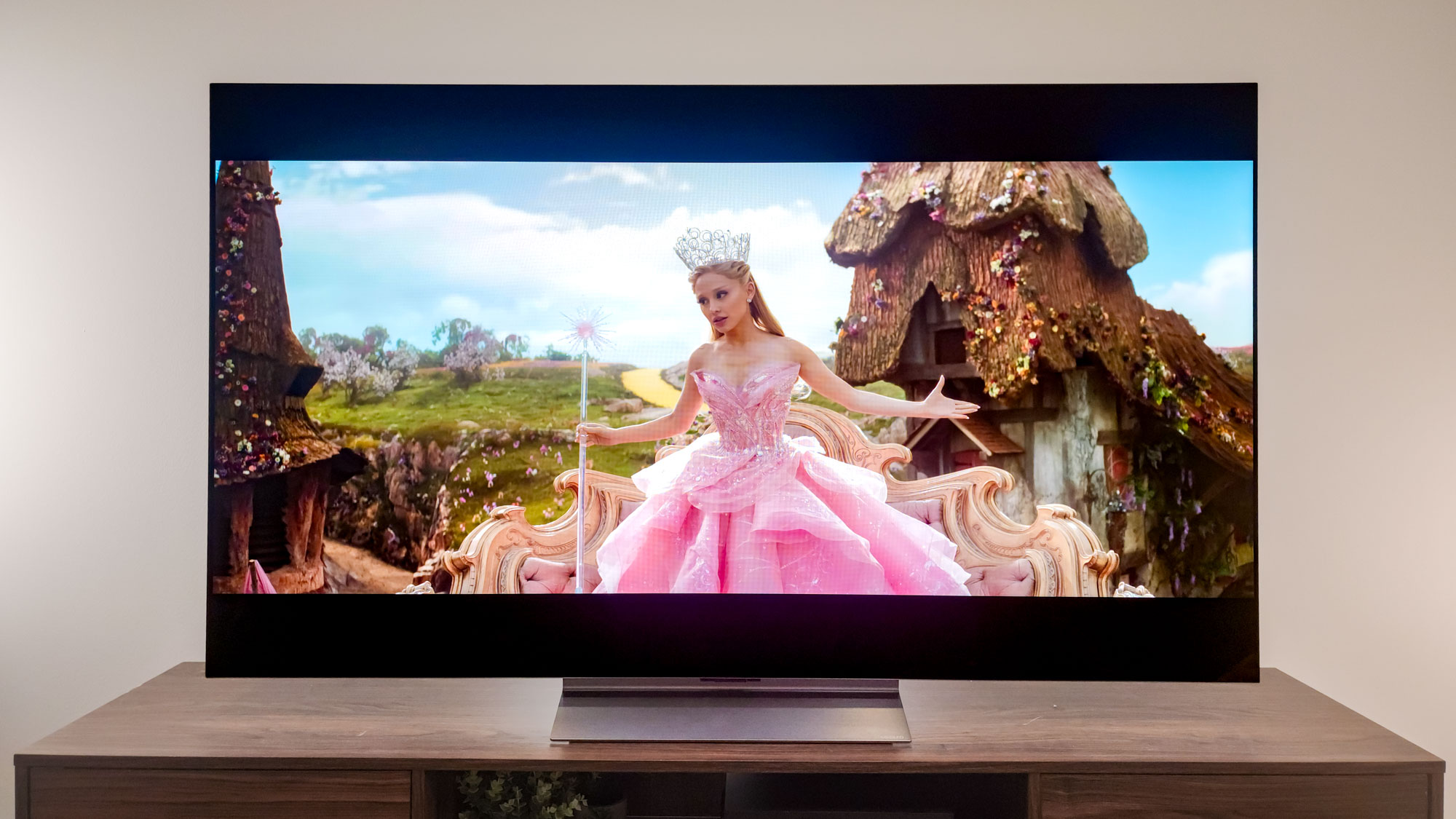

Specifications
Reasons to buy
Reasons to avoid
The LG C5 is easily the best OLED TV available right now. It'll blow your socks off from the moment you turn it on, and delivers everything that you could need for gaming or watching TV and movies at home or in a bright room.
Although that might be why you're interested in a OLED TV in any case, the C5 is a step above as it shows incredible deep black level performance and higher-than-average brightness, an impressive feat for an OLED, rather than the pricer QLED TVs.
When we tested the TV, the colors were absolutely gorgeous on movies like Barbie and WIcked, and the deep blacks were impressively, well, dark. Given that every modern movie relies on color differention and darker tones, this is a hugely important factor.
There's also a Game Optimizer mode for when you're ready for a session. It was really easy to activate with a push on the remote, and allows you to change the frame rate, black stablizer and toggle Dark Room Mode to adjust the brightness.
Like many TVs, the sound is a bit average, especially compared to the vivid, poppy colors. So you may want to pick up one of the best soundbars to really get the most immersive experience. But this webOS TV is easily one of the best OLEDs right now.
- Read our full LG C5 OLED review
Best value OLED TV
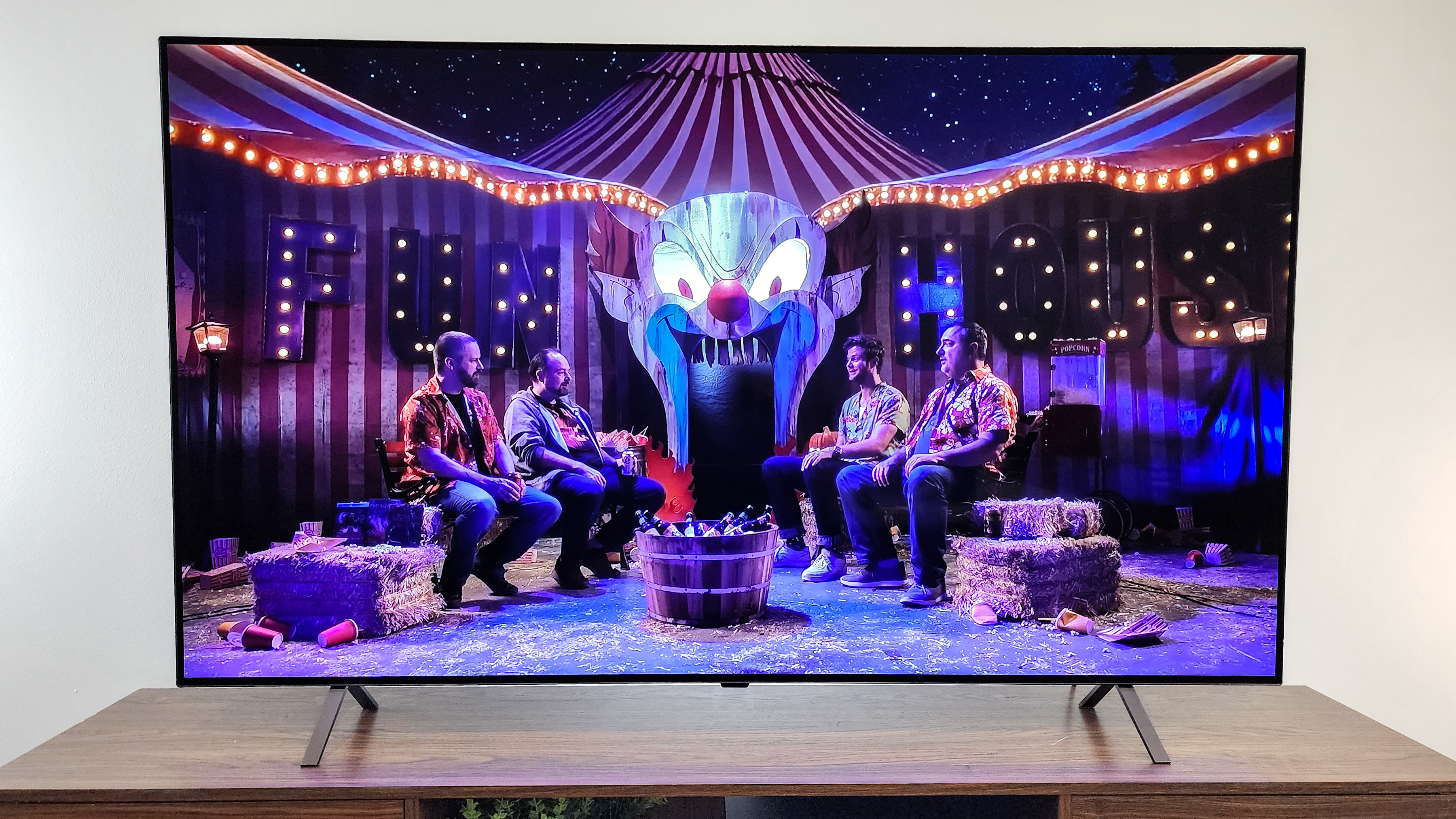

Specifications
Reasons to buy
Reasons to avoid
If you're looking for a phenomenal TV at a lower price than most, consider the LG B4. It is last year's model, as the LG B5 exists now, but for less money, the B4 is a better value option. Plus, that and we weren't so keen on the B5's brightness.
But instead of focusing on what the B5 lacks, there is so much that makes the B4 stand out as one of the best OLEDs, especially at its now lower price. We were impressed with its picture processing, particularly its motion handling.
Fast-paced action movies and sports looked especially good in our lab. It's also worth noting that, in LG's Filmmaker mode, the B4 offers fantastic out-of-the-box color accuracy.
This is another way in which the B4 offers many of the same benefits as higher-priced OLEDs. If you're looking for a little more brightness, the newer LG C5 might be worth the extra cost, especially if your room is particularly sunny (or if you watch a lot of movies and shows with the lights on).
For most people, though, the B4 is a great compromise. It offers an impressive picture at the lowest price of any OLED TV.
- Read our full LG B4 review
Best Samsung OLED TV
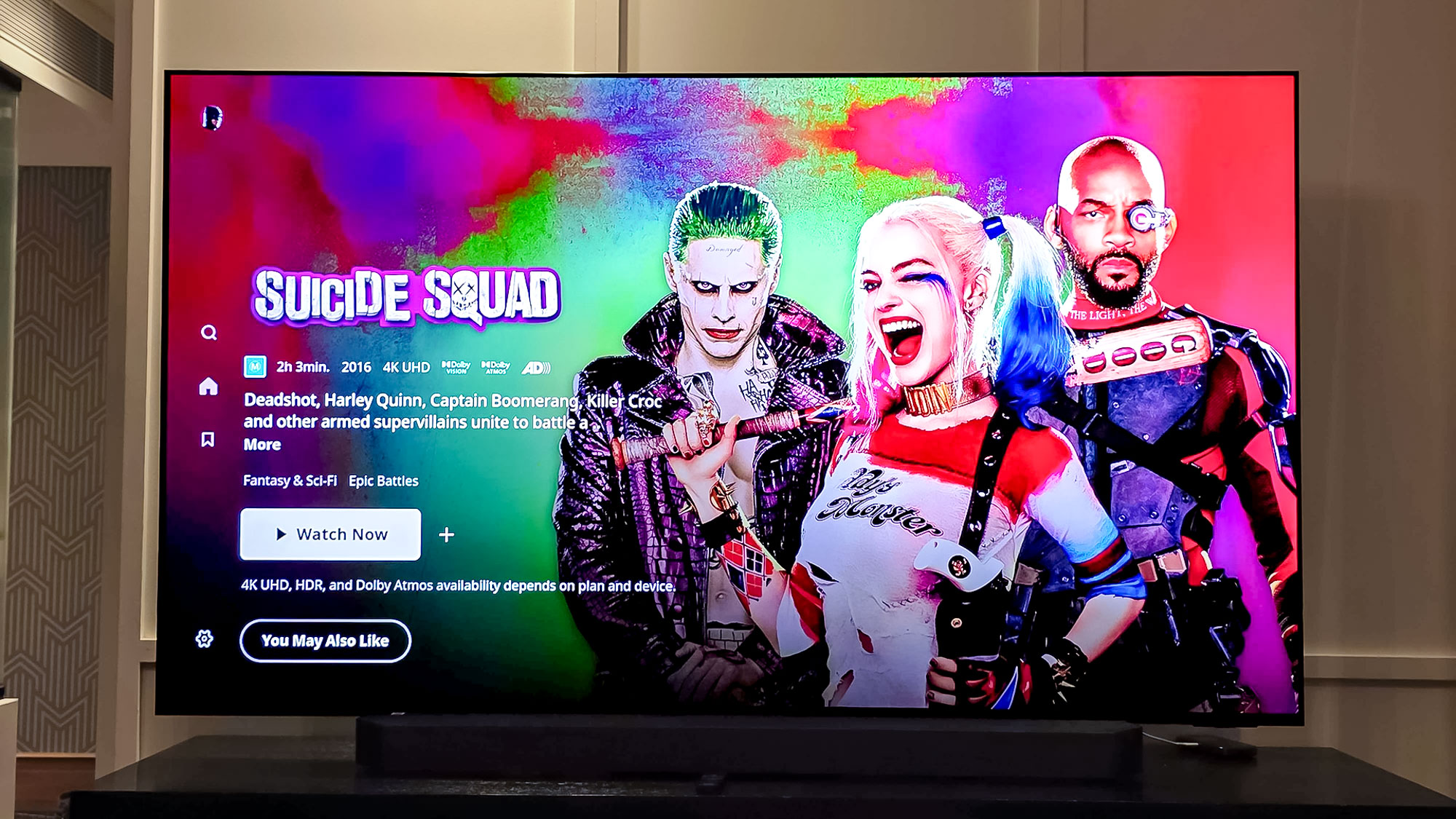

Specifications
Reasons to buy
Reasons to avoid
Samsung's QD-OLED lineup continues to improve year-on-year, and the S95F is currently the best OLED TV the South Korean electronics manufacturer has ever produced.
This year's model offers higher peak brightness while keeping last year's game-changing anti-glare matte screen.
Interestingly Samsung chose not to use its new Wireless OneConnect Box on the Samsung S95F OLED, but that appears to be a good decision. In our testing, we found that the wireless version actually introduces several milliseconds of latency, making it worse for gamers.
The reason it's down at number three are twofold. First, Samsung still refuses to pay the licensing fees for Dolby Vision, which means you won't be able to watch films quite how their creators intended. Secondly, Samsung's newest version of Tizen leans a bit too heavily on AI upscaling.
Our reviewer, Stephen Lambrechts, said that while he appreciated the extra color saturation and sharpness, the resulting image deviated quite heavily from the original color grading of the films he watched.
Overall this is still one of the best OLED TVs in 2025, but it's currently playing second fiddle to the more affordable (and Dolby Vision-enabled) LG C5 OLED.
- Read our full Samsung S95F OLED review
Best LG OLED TV
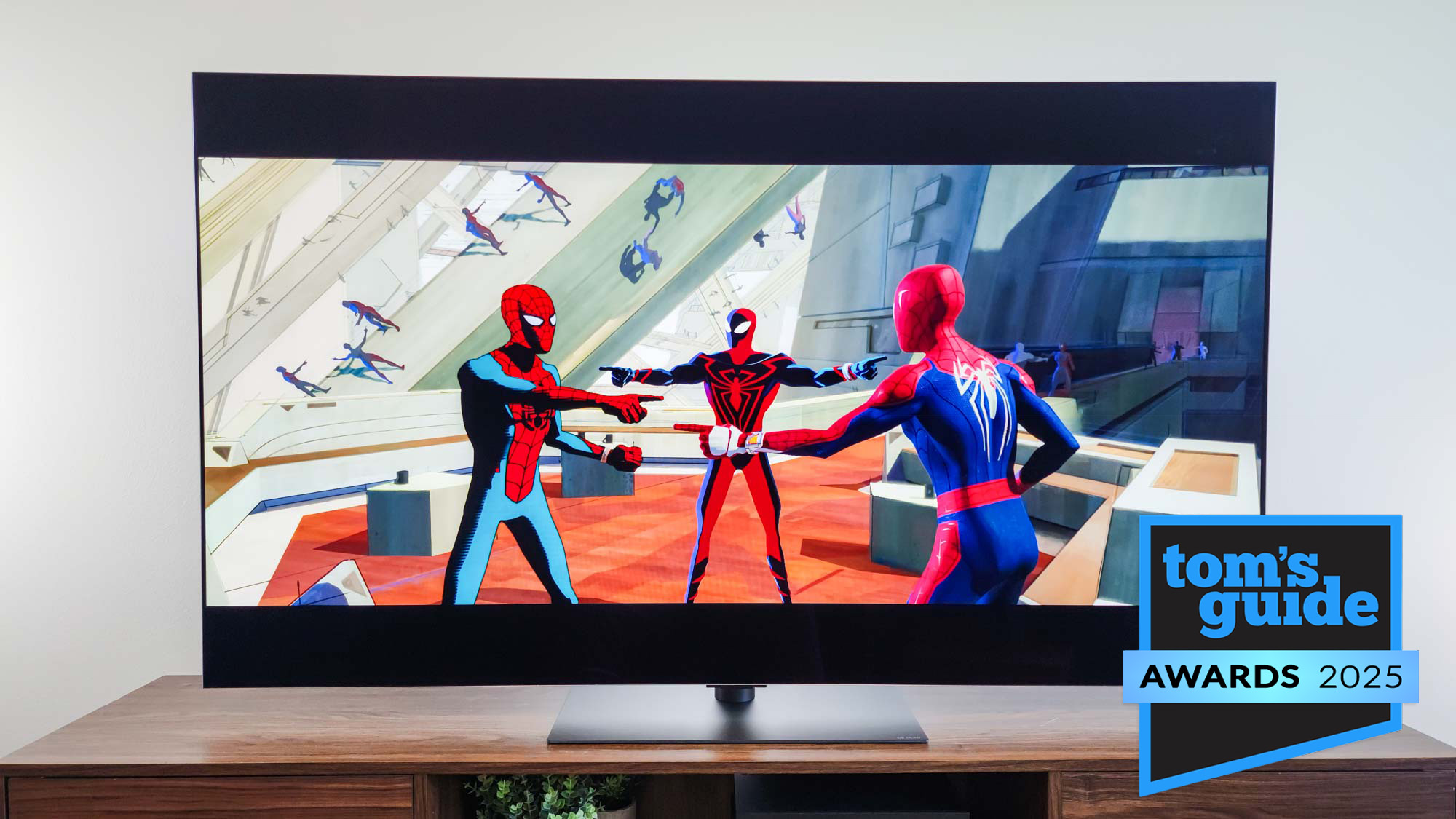

Specifications
Reasons to buy
Reasons to avoid
Wait, isn't the LG C5 OLED the best LG OLED TV? Yes and no. If you're limited in what you can spend on a TV (and let's be honest, who isn't?) then the C5 will deliver the best performance at the best price. But if you take budget limitations off the table, the G5 is the best LG OLED at any price point.
In our review, we called the LG G5 OLED "a picture powerhouse, with brightness and color performance that have to be seen to be believed." It aced our lab tests, spitting out almost 2,300 nits in HDR and covering 82.42% of the Rec.2020 color gamut.
Where the LG G5 outpaces the competition is in its design. LG developed the G5 to seamlessly meld into the wall and even includes a bespoke no-gap wall-mount to help the TV look like it's designed for an art gallery.
It's not the only TV designed like this (both Hisense and Samsung have similar models) but it is by far the best-performing of the bunch thanks to its underlying OLED panel.
- Read our full LG G5 OLED review
Best Panasonic OLED TV
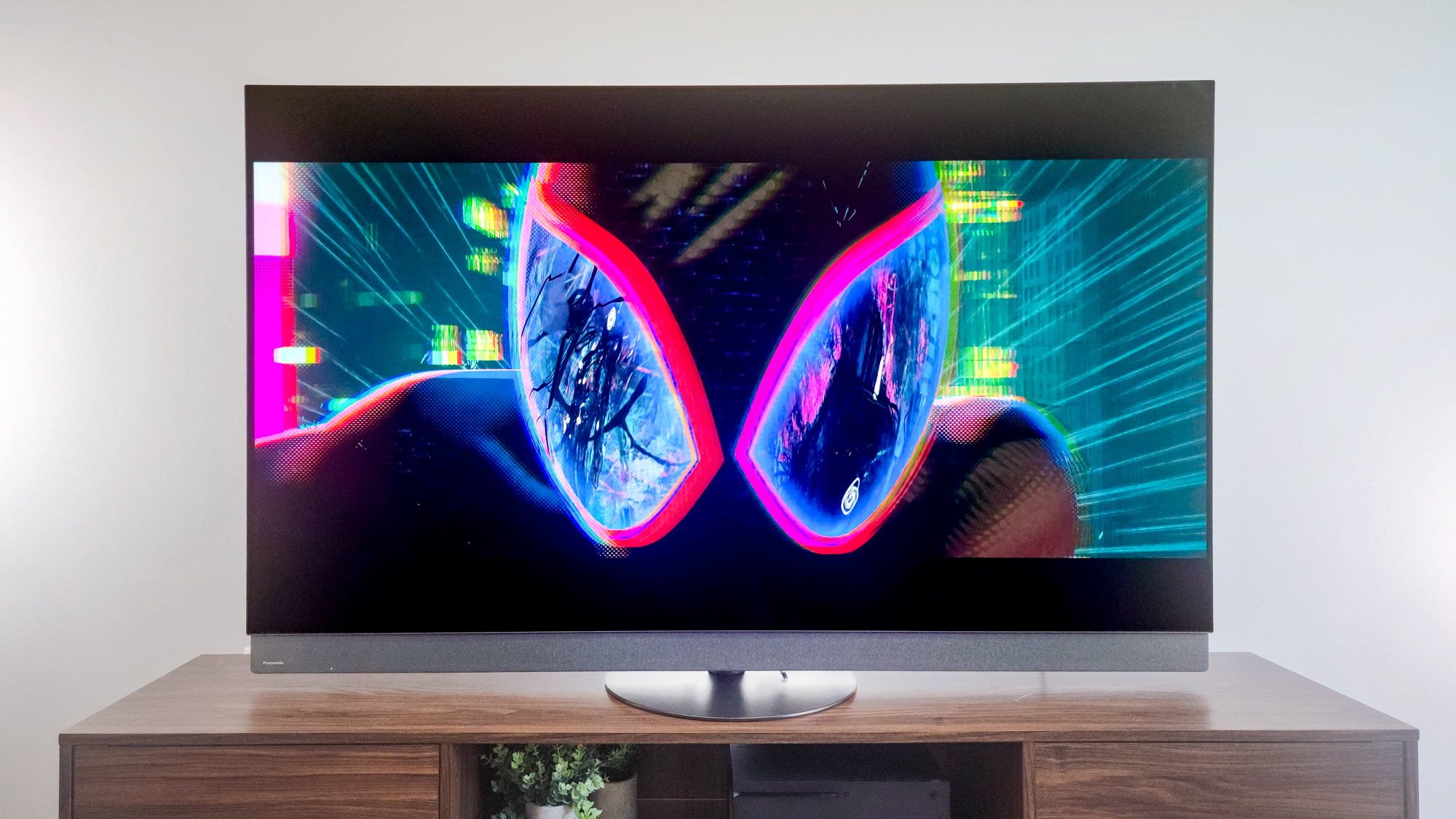

Specifications
Reasons to buy
Reasons to avoid
Once upon a time, Panasonic TVs were the cream of the crop. Then, suddenly, the brand disappeared from US shelves entirely. But in 2024, they returned with the Panasonic Z95A, one of the best OLED TVs we've tested in years.
Its successor, the Z95B, doubles down on everything that made the Z95A so successful. Our testing shows that it got a little more colorful, a lot brighter and even more accurate in its color representation.
It's a cinephile's dream screen through and through. Thanks to its support of Dolby Vision and HDR10+, you'll get richer colors and deeper darks. It's a fantastic TV hardware-wise, but the software lets it down.
Panasonic opted for Amazon's Fire TV operating system, which offers the worst user experience of most TV OSes. The platform is littered with ads for Amazon Prime content, and that content now comes pre-loaded with actual ads. When I'm dropping over $2,000 on a new TV, this is a deal-breaker for me.
But folks who don't mind the ads — or are willing to shell out for an Apple TV 4K to skip the built-in operating system altogether — will find a super-sophisticated OLED that restores Panasonic's brand name to its former glory.
- Read our full Panasonic Z95B OLED TV review
Also tested
Here are all the OLED TVs that either are a bit too old to make it to the top of our list, or just missed a spot due to a few issues. Despite their flaws, however, they're still worth researching if you're in the market for a new OLED TV.
Samsung S90D OLED ★★★★
The Samsung S95D is Samsung's most cutting-edge model, but the step-down S90D is no slouch either. We recently tested it and measured a peak brightness of 1187 nits (better than both the LG C4 and Panasonic OLED TVs) and a Rec2020 color gamut coverage of 90.58%. In terms of color, this TV can't be beat. Best of all, though? It's actually not terribly expensive and starts at just $1,200. If the S95D is a bit too pricey, consider its more affordable stablemate instead.
Read our full Samsung S90D OLED review
OLED TV FAQs
How much do OLED TVs cost?
The majority of OLED TVs in the 55- and 65-inch range sell for between $1,500 and $2,000, but premium models will often cost more, and larger screen sizes can routinely sell for $3,000 or more.
What is OLED?
OLED stands for Organic Light Emitting Diode, a display technology that uses organic compounds to create clusters of red, green, blue, and white points of light to make up the individual pixels of the TV. On a 4K TV with 3840 x 2160 resolution, that means a single OLED panel will have 8.29 million pixels. And unlike standard LCD TVs, each one of those pixels produces its own light, and can be individually turned on or off, brightened or dimmed.
That pixel-level control of brightness lets OLED offer the best contrast of any display technology, with neighboring pixels delivering everything from intense brightness to true black, and every color imaginable.
As a result, OLED TVs consistently outperform the majority of LED-lit LCD TVs, whether they use standard LCD panels or boost the picture quality with enhancements like quantum dots (also known as QLED) or discrete dimming zones.
You can find similar-performing technology out there (microLED is another display type that uses microscopic light-emitting diodes for perfect contrast) but OLED is still the most mainstream option out there.
Are OLED TVs worth buying?
If you want a truly excellent TV, OLED is absolutely worth considering. It offers better picture quality than standard LCD TVs can match, and with prices coming down every year, they're no longer prohibitively expensive either. In testing and reviews, OLED TVs have consistently offered some of the best picture quality available.
There are areas of performance where LCDs offer better performance. Brightness on OLED TVs is no match for the greater intensity you can produce with an LED backlight, and LCD sets don't have the same risk of burn-in or color drift that OLEDs have to contend with long-term. But in virtually every other area, from viewing angles to color accuracy, OLED sets match or beat LCD-based competitors hands down.
But there is some question of whether that improved quality is worth the added expense. When there are 4K models selling for under $500, why spend $1,000 or more on an OLED set? There is definitely a case to be made for spending less for quality that is comparable, if not exactly the same.
But if you want the best color, contrast and overall quality you can get from a TV today, OLED is the way to go.
Which brands offer OLED TVs?
Currently, of the major brands you're most likely familiar with, only LG, Panasonic, Samsung and Sony offer OLED TVs. The panels themselves are manufactured by LG Display and Samsung.
Due to the unique manufacturing process and the costs associated with production, OLED TVs are currently only available in the following sizes: 42, 48, 55, 65, 77, 83 and 97 inches.
How to choose the best OLED TV
The above selection of OLED TVs offer an embarrassment of riches for TV shoppers to choose from, with everything from basic functionality to advanced smart features and premium designs.
The biggest factor in most shopper's decision making will be price, but other differences include physical designs.
Smart features are also a differentiator. LG sets offer a pretty consistent experience across all of its models thanks to the webOS platform, but Sony's Google TV and Samsung's Tizen sets have strengths and weaknesses of their own.
How we test the best OLED TVs
Every OLED TV we review goes through a thorough testing and evaluation process, starting with rigorous lab testing and finishing with eyes-on evaluation by our reviewers. There's a lot more to it than just putting on a couple of 4K Blu-ray movies or hooking up a game console.
In our TV test space, we submit every TV to a number of lab tests, using industry-standard equipment, such as a calibrated spectrophotometer, calibration software and a dedicated test pattern generator. We measure for several indicators of picture quality, but these are the main metrics used in all of our reviews:
Color gamut, which measures how much color a given TV can produce. Expressed as a percentage rating, most OLED TVs meet or exceed 100% of the Rec709 color space.
Color accuracy, which measures the average deviation from perfect accuracy, expressed as a number (Delta-E), with higher numbers indicating less accurate color.
Contrast, measuring the difference between the darkest darks and brightest brights that a TV can produce, which is expressed as a ratio.
Brightness, measuring the peak luminance of a panel or display. This measure is reported in nits, an industry term for candela per square meter (cd/m2).
Lag time is the interval between a signal, such as button press on a game console, and the subsequent change registering on-screen. Measured with a Leo Bodnar Video Signal Input Lag Tester, this is measured in milliseconds, and provides a good indicator of how well-suited a TV is to modern gaming.
We pair this lab testing with hands-on time, viewing video samples and movies to see how these numbers translate into real-world performance. With that information, we can tell you which TVs look best, sound best and offer the best viewing experience.
Finally, we also evaluate the smart TV software and menus, getting a feel for the navigation and functions of each TV. We look at everything from the remote control design to the voice interaction to let us meaningfully talk about the smart features and overall ease-of-use for a smart TV.
Get instant access to breaking news, the hottest reviews, great deals and helpful tips.

Nick Pino heads up the TV and AV verticals at Tom's Guide and covers everything from OLED TVs to the latest wireless headphones. He was formerly the Senior Editor, TV and AV at TechRadar (Tom's Guide's sister site) and has previously written for GamesRadar, Official Xbox Magazine, PC Gamer and other outlets over the last decade. Not sure which TV you should buy? Drop him an email or tweet him on Twitter and he can help you out.
- Michael DesjardinSenior Editor, TV
- Ryan EppsStaff Writer

